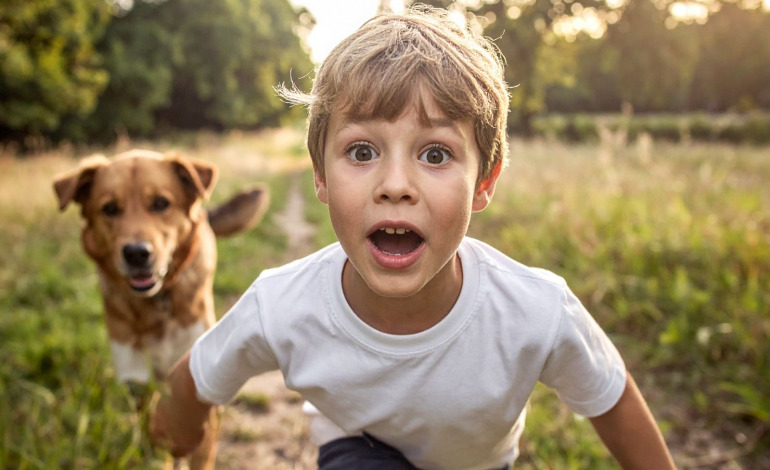Abdali Hospital - 25th floor - Amman - Jordan

How to Handle Dog or Cat Bites in Children
Children may sometimes get bitten by a dog or a cat — either a pet at home or a stray animal in the street.
Some bites are minor, but others can cause infections or even transmit rabies, knowing the correct first steps is
extremely important.
Step 1: Immediate First Aid for Any Bite (Dog or Cat)
1. Wash the wound right away with running water and soap for at least 5–10 minutes.
2. Disinfect the area with an antiseptic such as Betadine or alcohol.
3. Stop any bleeding by pressing gently with a clean gauze or cloth.
4. Cover the wound with a clean dressing.
5. See a doctor immediately to assess the injury and decide whether tetanus or rabies shots are needed.
Step 2: Bites from Stray Dogs or Cats (Street Animals)
High risk! these animals are usually not vaccinated and their health status is unknown.
What to do:
• Treat every stray animal bite as a medical emergency.
• The child should receive immediately:
-Rabies vaccine
-Tetanus vaccine (if more than 5 years since the last dose)
• Do not wait to observe the animal — most strays cannot be tracked.
• The wound should be treated and antibiotics given if necessary.
Step 3: Bites from Household Pets (Vaccinated or Domestic Animals)
In this case, evaluation depends on three main factors:
1. Severity of the wound
2. Vaccination status of the animal
3. Possibility of observing the pet after the bite
● Minor bite or scratch (no bleeding):
• Wash and disinfect the wound.
• No rabies vaccine needed if the pet is healthy and vaccinated.
• Observe the animal for 10 days to ensure it stays healthy.
• Give tetanus vaccine if it has been more than 5 years since the last dose.
● Moderate bite (small bleeding or deeper scratch):
• Clean and disinfect thoroughly.
• Consult a doctor.
• Rabies vaccine may be given depending on the case:
- If the pet is vaccinated and can be observed, vaccination may be delayed.
- If the pet is unvaccinated or cannot be observed, start rabies shots immediately.
● Deep or dangerous bite (face, neck, or head):
• Emergency case.
• Clean, disinfect, and seek urgent medical care.
• Rabies vaccine is usually given immediately — even if it’s a pet —unless the animal is fully vaccinated (within 1–3 years) and can be
observed under veterinary supervision for 10 days.
Step 4: Observing the Animal After the Bite
The dog or cat should be observed for 10 days after the incident.
If any of the following symptoms appear
●Change in behavior
● Loss of appetite
● Excessive drooling
● Difficulty swallowing or walking
Start rabies vaccination immediately, even if it was previously postponed.
Conclusion
• Every animal bite needs medical evaluation.
• Stray animal bite = rabies vaccine is always required.
• Vaccinated pet = observation may be enough, depending on the wound.
• Golden rule: Any deep wound or bite to the face should be treated as an emergency